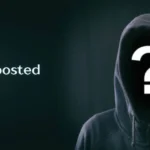Security footage analysis has long been a cornerstone of surveillance and crime prevention efforts. From monitoring public spaces to securing private premises, the insights gleaned from security cameras play a crucial role in maintaining safety and security. However, the sheer volume of video data generated by these systems poses significant challenges for manual review and analysis. Enter AI video blurring—a ground-breaking technology that is revolutionizing the way security footage is processed and protected.
Introducing AI Video Blurring
AI video blurring offers a game-changing solution to the challenges of security footage analysis. By leveraging advanced machine learning algorithms, AI blurring technology can automatically detect and blur sensitive information in real time, such as faces, license plates, or other personally identifiable details. This not only protects the privacy of individuals captured on camera but also streamlines the process of reviewing and analyzing footage, enabling security teams to focus their efforts more effectively. You can try to blur a video with Secure Redact and their software.
Enhancing Security and Privacy
One of the primary benefits of AI video blurring is its ability to enhance both security and privacy simultaneously. By obscuring the identities of individuals in security footage, AI blurring helps safeguard their personal information and comply with privacy regulations. This not only reduces the risk of unauthorized access or misuse of sensitive data but also fosters a greater sense of trust and transparency in surveillance practices.
Streamlining Investigations and Incident Response
In addition to protecting privacy, AI video blurring also plays a crucial role in streamlining investigations and incident response efforts. By automatically blurring out irrelevant details and focusing attention on relevant events, AI blurring technology enables security teams to quickly identify potential threats or suspicious activities. This accelerates the investigative process, improves decision-making, and enhances overall security posture.
Addressing Concerns and Limitations
Despite its many benefits, AI video blurring is not without its challenges and limitations. Concerns have been raised about the accuracy and reliability of AI algorithms in detecting and blurring sensitive information, as well as the potential for unintended consequences or false positives. However, ongoing research and development efforts are focused on addressing these issues and improving the effectiveness of AI blurring technology in real-world scenarios.
Future Trends and Innovations
Looking ahead, the future of AI video blurring holds great promise for further advancements and innovations. As AI algorithms continue to evolve and improve, we can expect even greater accuracy and efficiency in detecting and blurring sensitive information in security footage. Moreover, the integration of AI blurring with other technologies, such as facial recognition and object detection, will open up new possibilities for enhancing security and privacy in diverse settings.
Why Manual Video Blurring Is Not Recommended
Are you still tempted to try manual video blurring? Some people believe this is a way to save money. After all, can’t you just do it yourself and save all of the hassle? Well, manual blurring has been done for years. However, this doesn’t mean it’s the best option. In fact, it can be time-consuming, risky and difficult. It’s not a recommended approach for most businesses when there’s better software available. Let’s take a look at why manual video blurring isn’t recommended.
You Can Make Mistakes
No matter how careful you think you’re being, it’s easy to make mistakes with manual video blurring. There are a few reasons this can happen. First, you’ve got the fact that this is a tedious task, and it’s easy to zone out. You can end up missing details that should be given privacy. Then, you’ve got to consider that blurring can be difficult. You need to decide what type of blur to use and position it in the video. If you don’t have a lot of experience or you’re tired, you will make a mistake.
Investing in reliable software is a good way to protect yourself and your business. It will do all of the work for you and minimise the risk of making a mistake. Indeed, it can take a lot of pressure off your shoulders and ensure you’re following privacy laws and regulations.
You can Spend More Than You Think
The big benefit of manual video blurring is avoiding the hefty cost of software. However, businesses are falling for misconceptions they see online. First, you have to think about your team and whether they can handle this. If you have to hire another employee, their salary is going to be a lot of money. Then, you have to think about the fines that could come your way if you make mistakes. Breaching privacy laws is serious and one that could mean facing expensive fines. This is enough to cause financial trouble for small businesses.
The best thing to do is weigh up the price of software versus the costs we’ve just discussed. You’ll find that software works out the best investment and one that you can use moving forward.
Conclusion
AI video blurring represents a transformative technology that is revolutionizing security footage analysis. By safeguarding privacy, streamlining investigations, and enhancing overall security posture, AI blurring technology is empowering organizations and agencies to meet the evolving challenges of surveillance and crime prevention. As we embrace innovation and harness the power of AI, we can create safer, more secure environments for all.







